The Power of Peru’s Wild Places
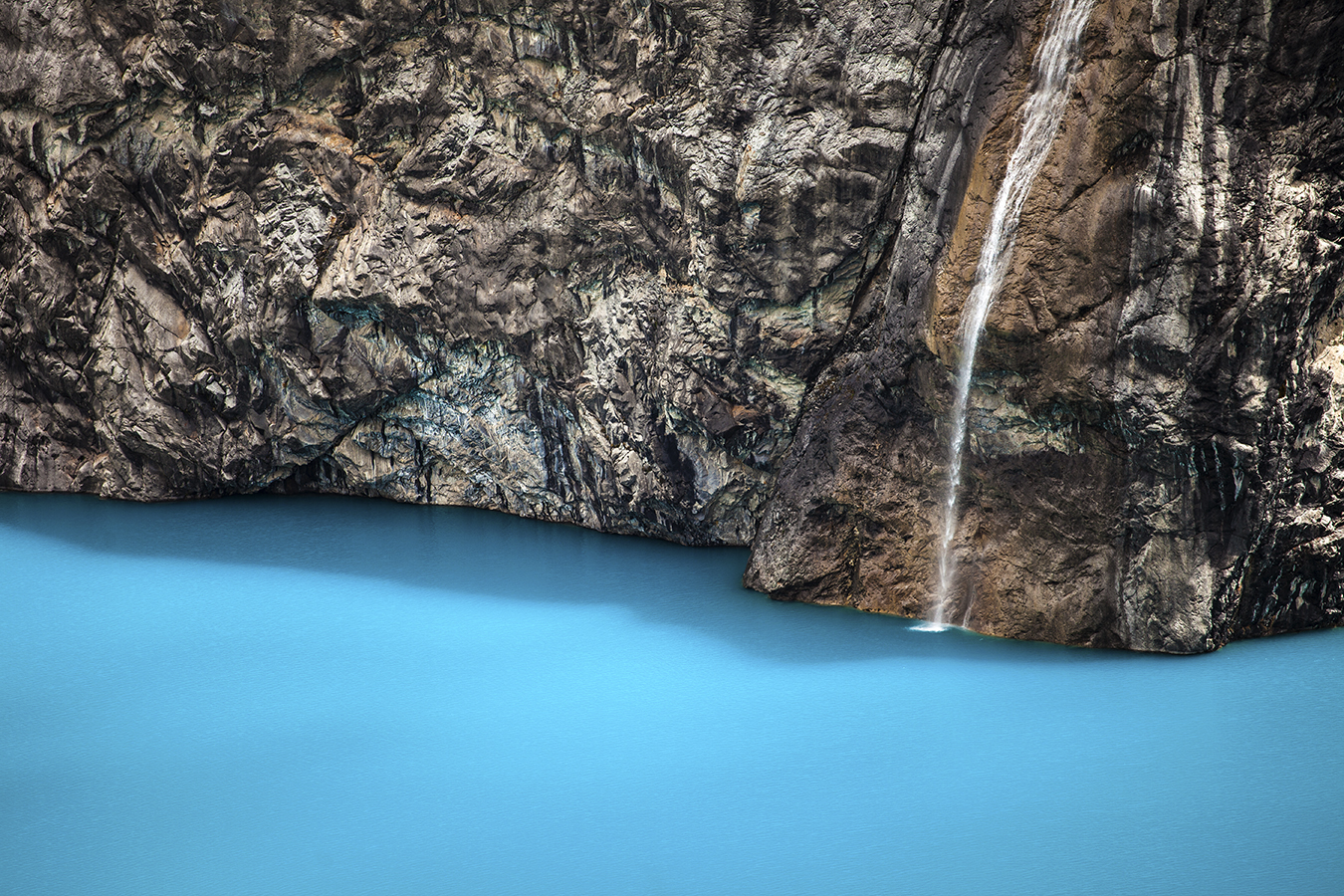
Story and Photos by Eric Hanson
The icy water punched me in the gut as I plunged into the turquoise lake. It took me several attempts to inhale after I surfaced, the cold water shocking my system. Then I let out a laugh and swam back to the shore to warm up in the thin atmosphere’s sun with the rest of the crew.

Swimming in a glacial lake at the base of several 19,000+ foot mountains felt in many ways like a culmination of our trek through the Huayhuash in Peru, and the climax of the last two months of my travels through South America. I left the U.S. under the firm impression that good things happen to those who push themselves out of their comfort zones and pursue adventure and a meaningful life. That was part of the idea behind my travels through South America. In February I gave up the house I had been renting, sold my car and almost all my possessions, and got on a one-way flight to Ecuador. I would be traveling the Andes from Ecuador to Patagonia.
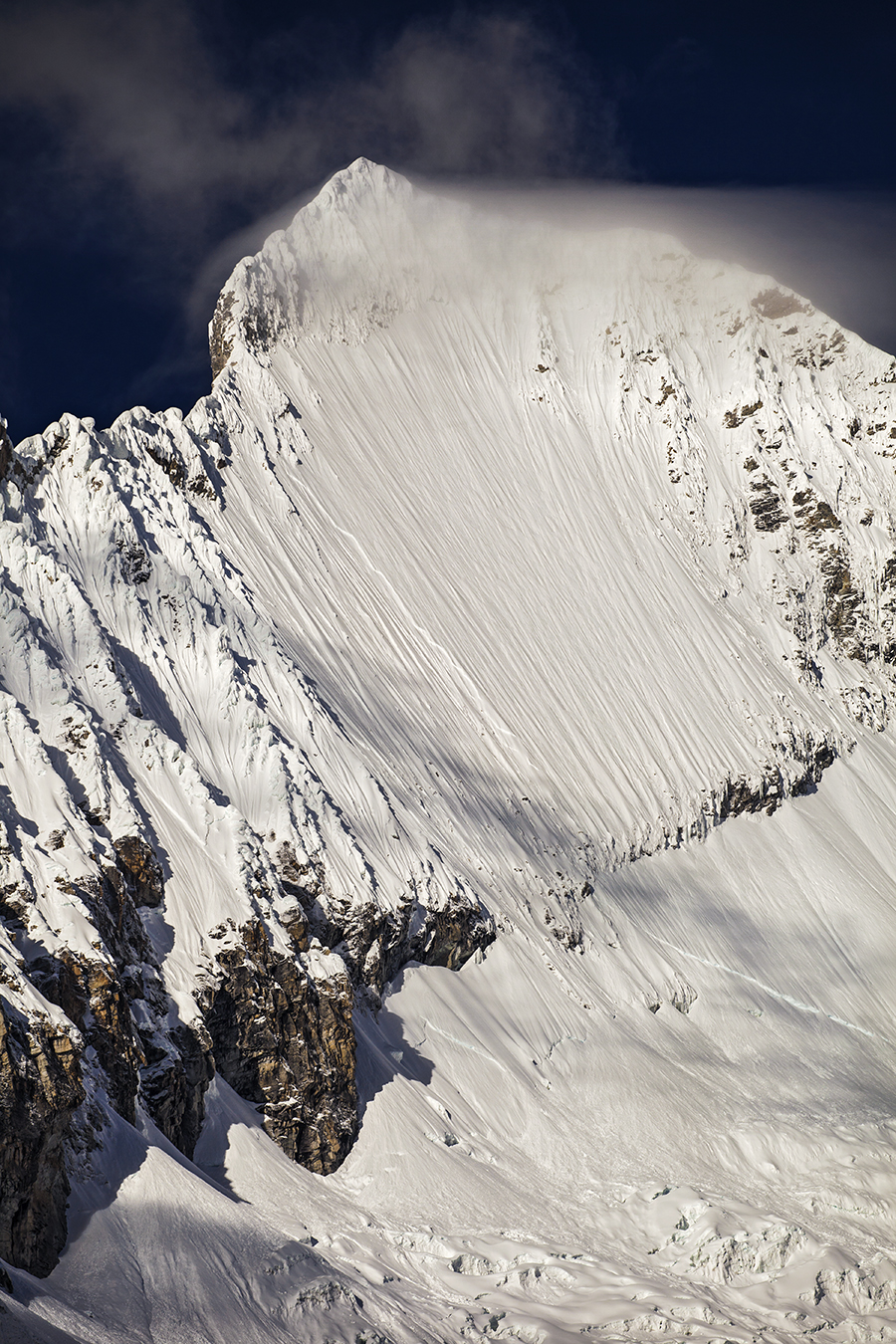
The Andes are a unique mountain range, and one I have craved exploring for years. A large swath of the range erupts out of a tropical zone, which means that lush, vibrant green terrain butts right up to rich blue glacier-clad peaks. The mountains are incredibly vertical, with gnarled, tooth-like peaks ripping at the sky. The Andes are spectacular. These mountains offer adventure to all, from casual hikers to the most hardcore climbers in the world.

After one month of my journey I received an email from some friends at MSR and was invited to work with a team that was headed to Peru on a photoshoot for an upcoming product launch. It was an easy choice to say yes. The Cordillera Blancas of Peru is an epicenter for South American adventure and is home to some of the world’s best trekking.
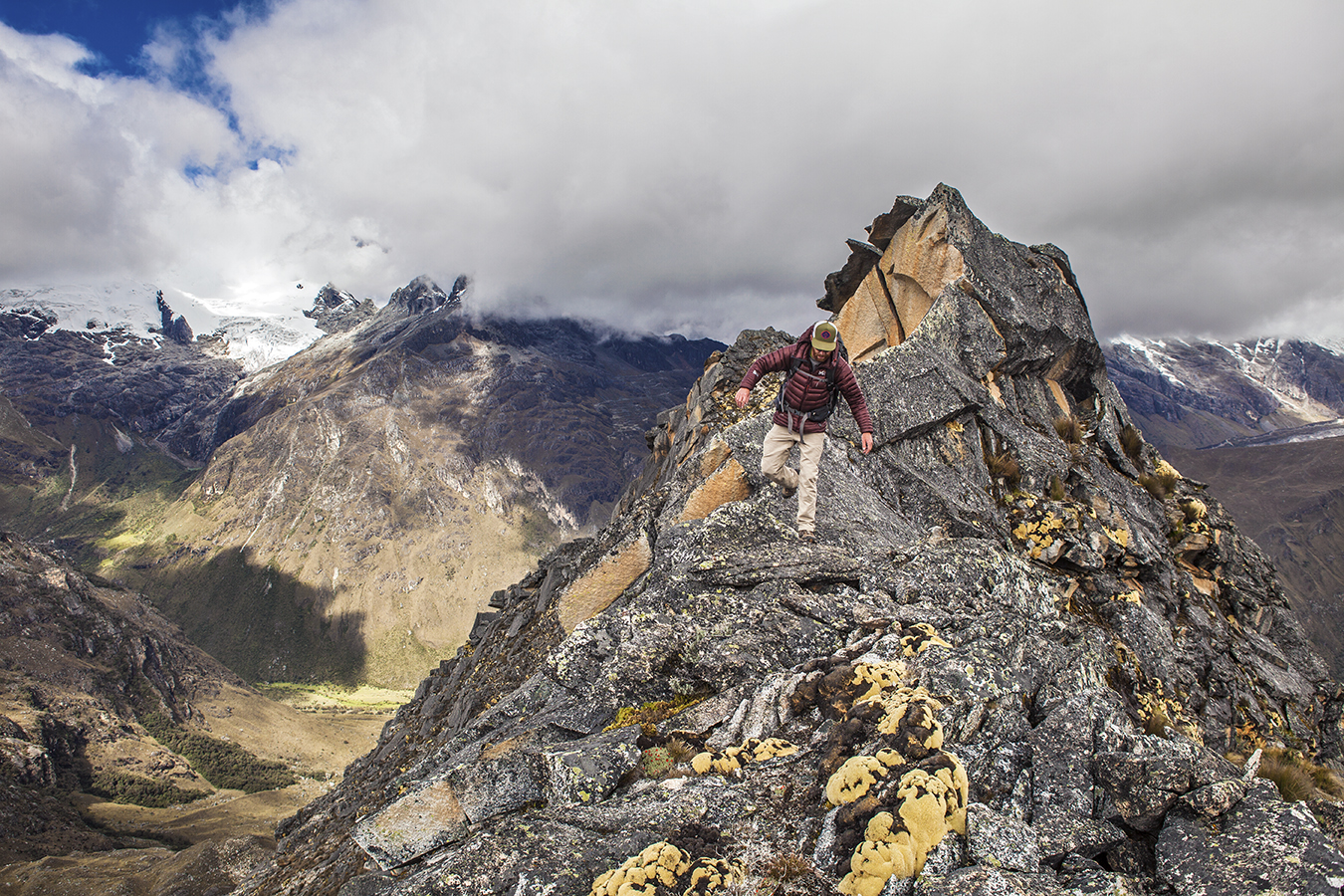
The plan for our team, consisting of Scott (professional photographer), Steve (MSR engineer), Lisa (outdoor badass), and myself (lucky guy), was to spend seven days trekking through the Huayhuash, one of the most rugged pockets of the Andes with peaks reaching from 18,000 to 22,000 feet. Trekking the Huayhuash is a bucket-list worthy destination, with more than 100 miles of strenuous trails through terrain that is the very definition of epic. I felt honored to be a part of the team.

On day one of the trek we ascended several thousand feet to the first camp at 13,000 feet. We set up camp just as the afternoon rains began. We each slept restlessly that first night, struggling to adjust to the high altitude.
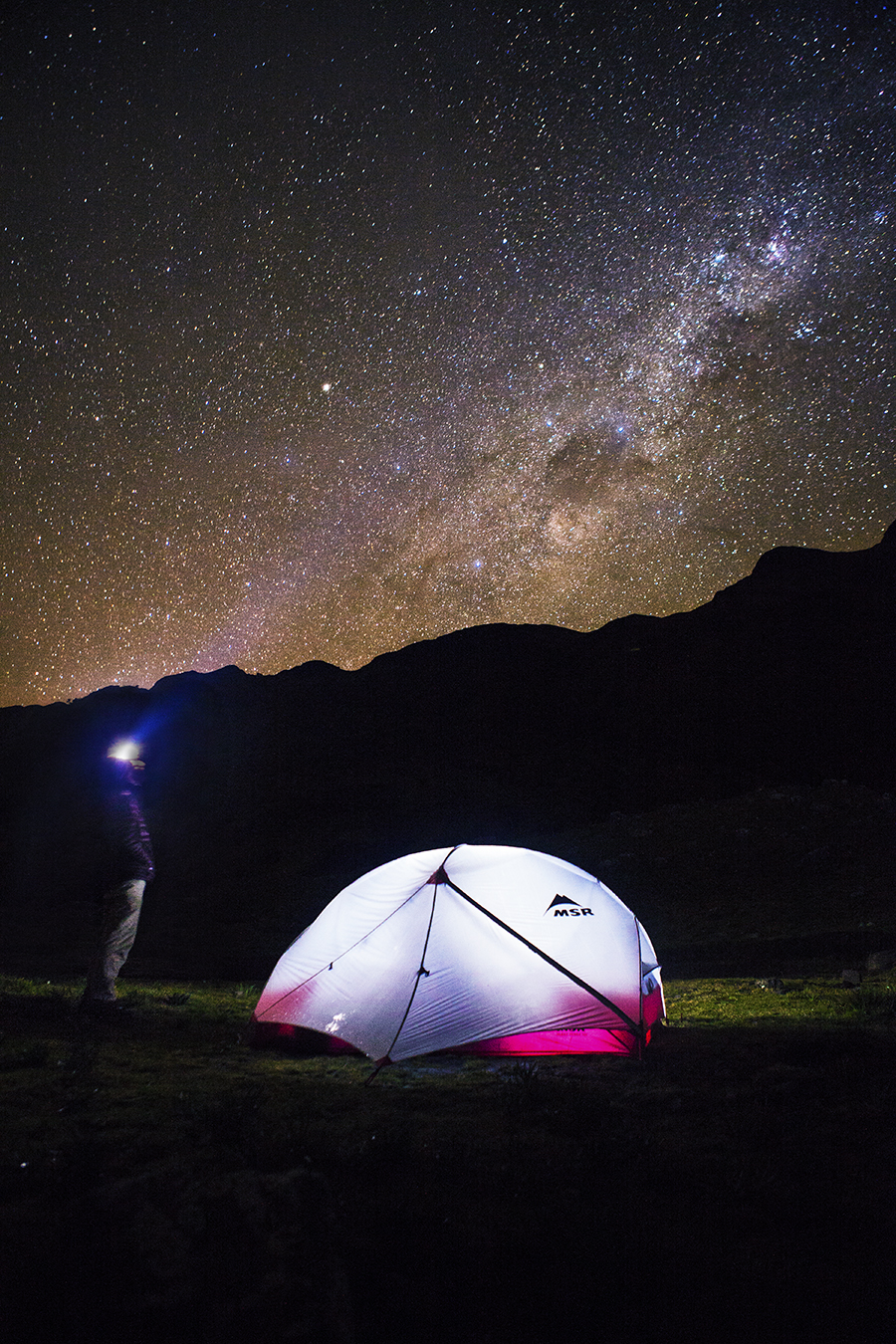
Day two was a complete mess. At 6 am I was woken up by someone shouting outside my tent. Groggily I peered out of the tent to see a local man telling me that our donkey had escaped in the night and was now several miles away. I spent the next two hours backtracking our trail in search of our donkey, finally encountering the jackass two miles below our camp. I made it back to camp with our rebellious donkey in time for french-press coffee and a little breakfast before hitting the trail. We struggled towards the 16,000 foot pass in front of us.
Due to health concerns we were forced to change routes. So on day three we went up and over a different pass, at a mere 15,600 feet. Scott bounded up the pass like a gazelle, but the rest of us straggled in. Heart pounding and chest heaving, I made it to the top. When we all made it, we high-fived each other and hollered with joy. Unfortunately the peaks were shrouded in thick monsoon clouds, obscuring our view of Peru’s second tallest mountain. With it still the rainy season, I was wondering if we would even get a glimpse of the majestic mountains at all.
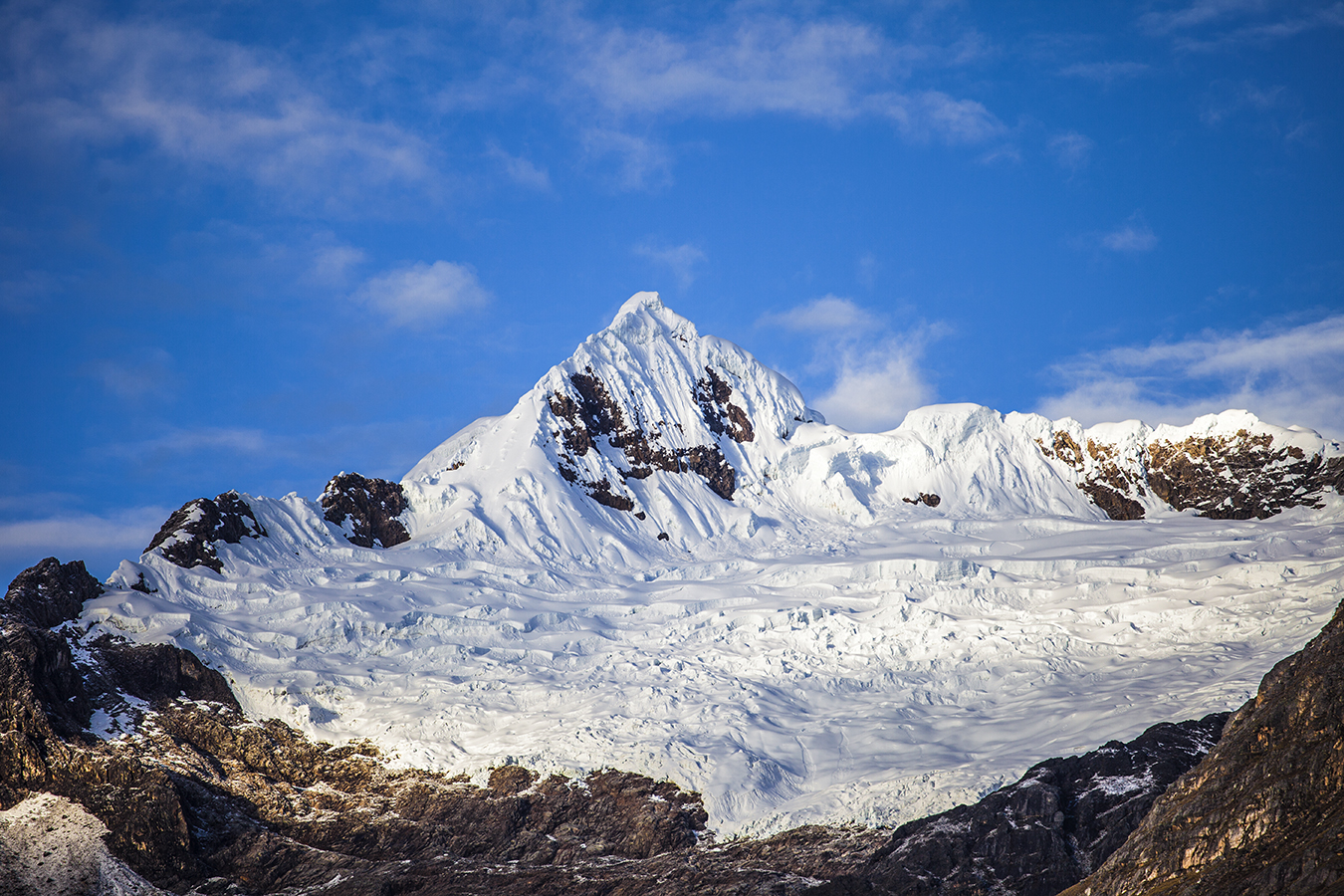
The next morning I almost fell over when I emerged from my tent. The clouds had parted in the night. It was a blue-bird morning, and the mountains stood before me bathed in glory. It was here, on the edge of an alpine lake, standing in front of one of the most beautiful sights I’ve ever seen, that I was reminded why we mountain-lovers do what we do. Wild places hold power. Sometimes we suffer along the journey to get to these places. But as in life and in adventure, we need to embrace the struggle to fully appreciate where we are. It had rained every day. There was cow poop everywhere. We each felt some symptom of altitude sickness at one point or another. But it was all worth it.

I did not know my three companions before meeting them on this trip. But after seven days of trekking, we really bonded. We bonded so much that we spent our last night together singing karaoke, as the only four in the whole bar, until 3 am. To me, that’s the definition of a successful expedition.
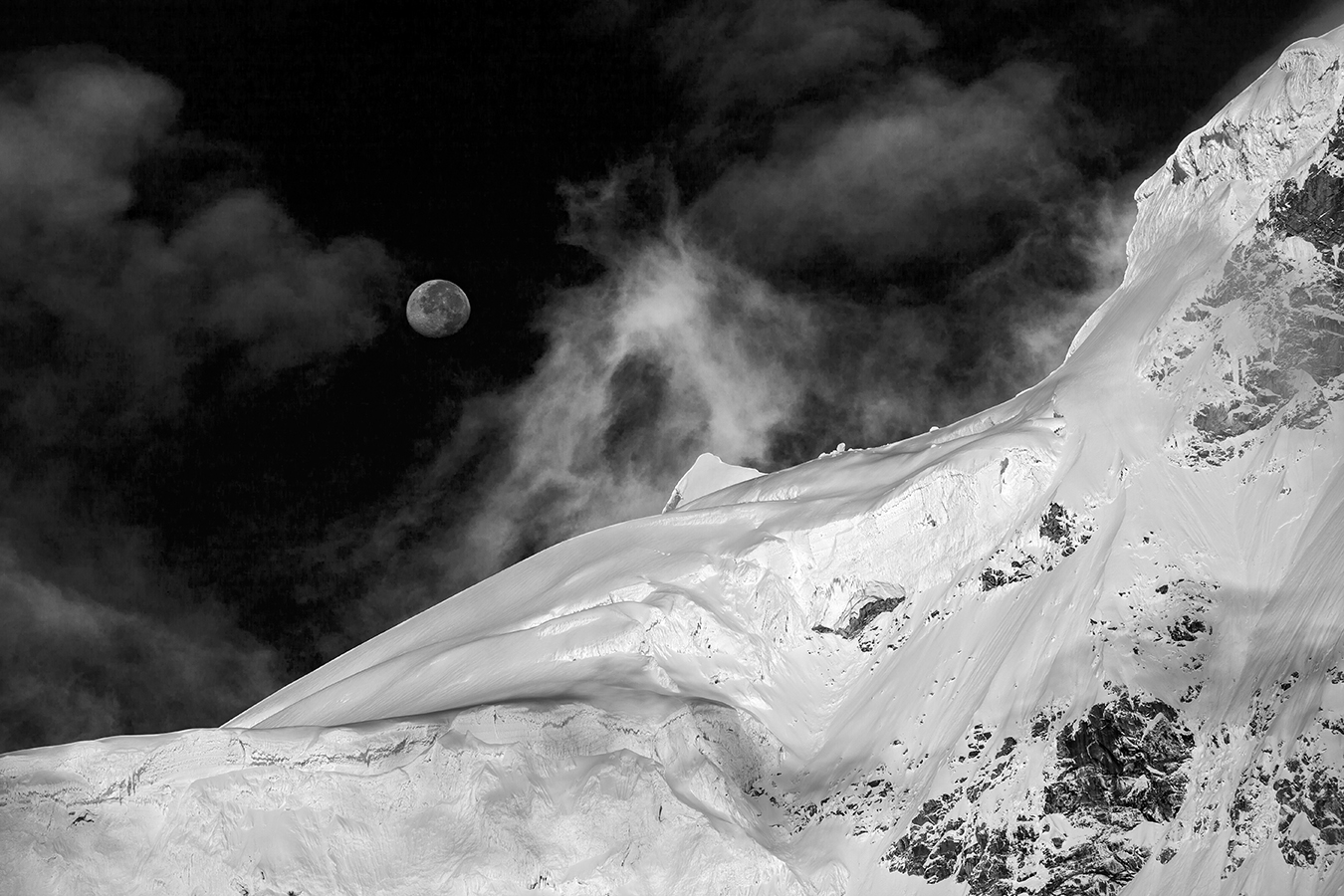
 Eric Hanson is a photographer, filmmaker, adventurer, and host of Backpacking TV. His documentary, Rock of Refuge: Climbing and Canyoneering in Zion National Park, is available now. Eric lives in Utah, but is currently trekking the Andes indefinitely. His beard is red. Ginger is an offensive word.
Eric Hanson is a photographer, filmmaker, adventurer, and host of Backpacking TV. His documentary, Rock of Refuge: Climbing and Canyoneering in Zion National Park, is available now. Eric lives in Utah, but is currently trekking the Andes indefinitely. His beard is red. Ginger is an offensive word.
